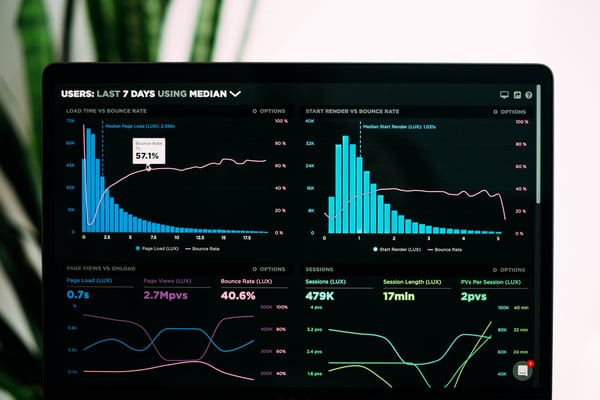Index Content
Social networks are a fundamental tool in digital marketing strategies. The use of them can help your company to achieve loyalty, to improve the relationship with your customers, to share content... But to know the results that your campaigns are having in networks you must use KPIs. Today we tell you what they are and the best examples. Attention!
what are KPIs?
KPIs, Key Performance Indicators, are metrics used in digital marketing to measure the performance of campaigns. As we have already mentioned, they are used to evaluate whether the actions you are carrying out are being carried out successfully and whether you are meeting the objectives you have previously set. In other words, they are used to observe and check that you are on the right track or if, on the contrary, you need to make changes.
KPIs are measurable numbers, in real time, that provide you with a lot of information to be able to make the best strategic decisions that allow you to improve and grow. But one thing you must be clear about, KPIs are metrics, but not all metrics are KPIs. KPIs are the most important metrics, that is why they are key indicators with which you can measure the performance of your business.

Best examples of social media KPIs
- Engagement KPI: Engagement is used to indicate the degree of engagement and loyalty between the brand and the followers. The higher the engagement, the more engaged your audience is and therefore, the more likely that follower will become a customer. To calculate the engagement of your profile the formula is as follows:
total interactions / people reached x 100
An example of this KIP would be for the total interactions on an Instagram post: the sum of the number of likes, shares, saves and total comments, divided by all the people who have seen the post, and the result of that division is multiplied by 100.
- Social Share of voice KPI. The number of followers is no longer a reliable indicator, because it does not mean that having a very high number of followers will lead to better engagement or generate more conversions. Moreover, in recent years, controversies have grown over the purchase of followers by companies or influencers. So the SSoV KPI shows how many people are talking about you, that is, all the mentions they make of your brand. The greater your participation in social networks, the more popular you will be and you will achieve a high percentage of your followers to become customers. The formula is:
SSoV = Views / Mentions of your brand on social media x 100
- KPI CTR. CTR or Click through rate is the metric that indicates the number of clicks that a publication receives on social media in relation to the number of impressions obtained. The formula is as follows:
cTR = No. of clicks / total impressions x 100
this KPI is usually applied when we do advertising campaigns, to know if the ad is being effective and the objective is being met.

- KPI Conversion rate: This is one of the most important KPIs, as it indicates whether the publications are being effective and a conversion is being achieved, this can be a purchase or subscription. In other words, it shows us what percentage of visitors are meeting the objective set by your brand. The formula is:
Total no. of conversions / no. of visitors x 100
For example, the number of conversions you can measure is the total number of purchases made on your website achieved through a post on your Instagram profile.
- KPI ROI. ROI or return of investment, calculates the profitability of your campaigns, so you know if the investment you have made in an ad is profitable. It also lets you know if the money you have invested is generating losses or, on the contrary, profits. The formula is:
ROI = (Profit / Cost or Investment) / Cost or Investment x 100
This metric is essential, as calculating it will help you make better future decisions because you will know if your actions are profitable, as well as having more information to evaluate if your strategies are profitable.
Finally, remember that your metrics must fit your objectives, which are previously set and SMART. Now it's your turn to implement your social media strategy and define the KPIs that best suit you. We hope you enjoyed this post!





